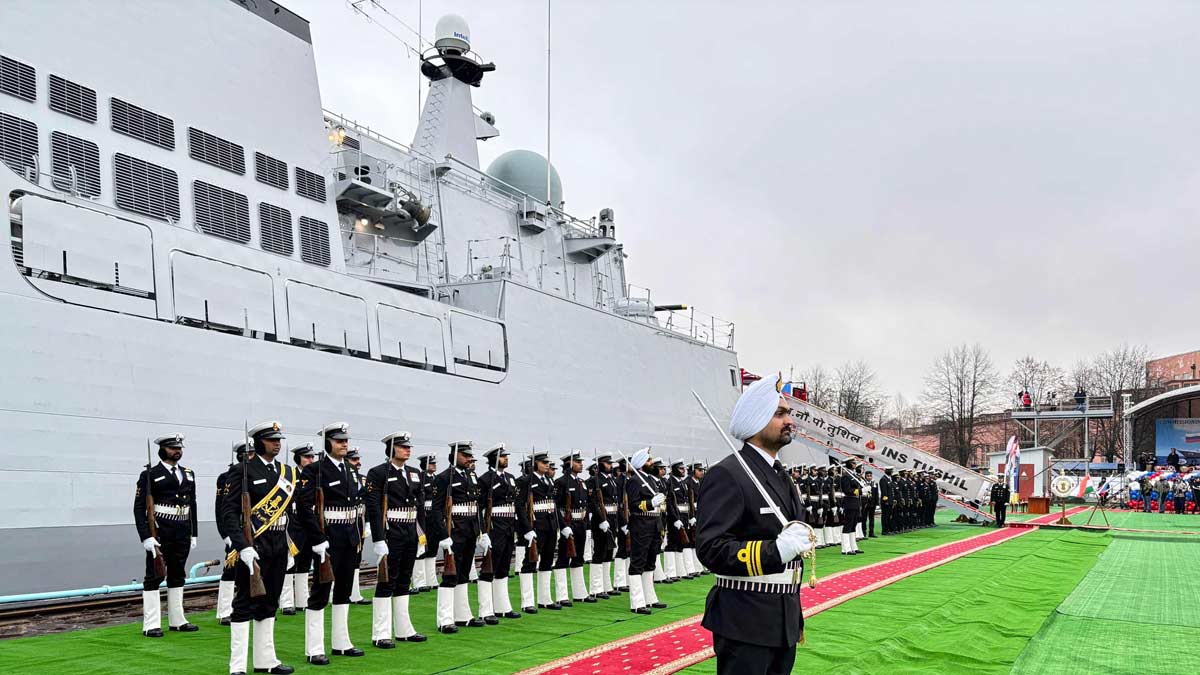On Monday, the Indian Navy welcomed a significant addition to its fleet with the commissioning of the guided missile frigate INS Tushil, a product of collaboration between India and Russia. This commissioning follows a substantial $2.5 billion agreement New Delhi entered into with Moscow in 2016, which entails the development of four stealth frigates specifically designed for the Indian Navy.
The deal encompasses a unique construction strategy where two of the frigates are being built in Russia, while the remaining two, including INS Tushil, are manufactured domestically in India. The sister ship of INS Tushil, named Tamal, is currently under construction in Russia and is anticipated to be commissioned next year.
Defence Minister Rajnath Singh lauded the commissioning of INS Tushil, describing it as a testament to the successful collaboration between Russian and Indian industries. This project stands out for its unique backdrop, as it showcases cooperation between two nations that are currently at odds—Russia and Ukraine.
INS Tushil is an upgraded variant of the Krivak III class frigate, classified under Project 1135.6. Notably, the vessel incorporates 26 percent indigenous content, yet a key component—the primary gas turbine engines—are sourced from a Ukrainian company, Zorya-Mashproekt. This company is distinguished as a global leader in the production of marine gas turbines. The procurement of these engines occurred in a complex manner amid the ongoing conflict between Russia and Ukraine; reports suggest that India managed to take delivery of the engines directly from Ukraine before transferring them to Russia for installation.
The new frigate boasts a displacement of 3,900 tonnes and measures 125 meters in length, making it a formidable asset for the Indian Navy. It exemplifies a sophisticated integration of cutting-edge technologies from both countries along with best practices in naval construction. With enhanced stealth capabilities and improved stability, INS Tushil is set to operate within the Western Fleet of the Indian Navy, positioning itself among the most advanced frigates globally.
A range of prominent Indian defense companies contributed to this ambitious project, with key players including BrahMos Aerospace Private Limited, Bharat Electronics Limited, Keltron, and Tata’s Nova Integrated Systems, along with Elcome Marine and Johnson Controls India. These firms played crucial roles in the development and technological integration of INS Tushil, further emphasizing the growing capabilities of India’s defense manufacturing sector.













